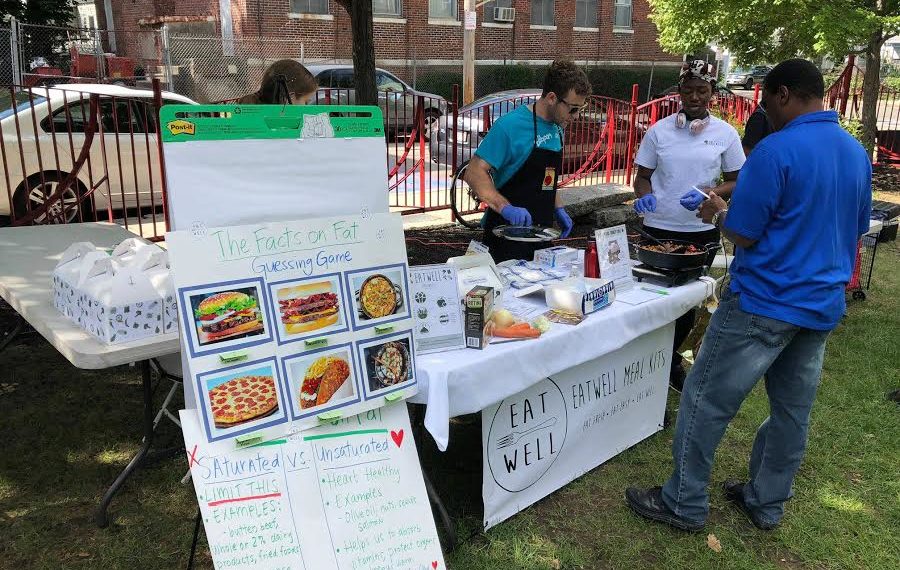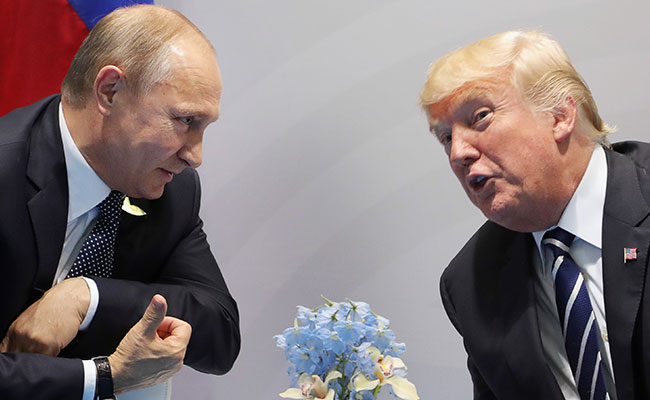Over the past decade, meal-kit delivery companies such as Hello Fresh, Blue Apron and Home Chef have flooded the market, advertising to even the most amateur chefs and threatening supermarket revenues. Now, some companies are pushing the boundaries of these models and introducing similar services into impoverished areas, commonly referred to as “food deserts.”
In general, the models of these aforementioned companies are almost identical. Users select their meals online, receive a box of pre-portioned ingredients in an insulated box at their doorstep, and follow step-by-step instruction cards to create stress-free meals.
According to Packaged Facts, a research firm based in Rockville, Maryland, U.S. meal kit market sales totaled $2.6 billion in 2017, and achieved an estimated $3.1 billion in 2018.
The most common customers and targets of marketing schemes for these services: “Millennial urbanites” with high disposable incomes, or in other words, those who are likely not living in food deserts.
EatWell in Boston and FoodQ in Chicago are revolutionizing the fundamental structures of meal kits and diversifying the recipient populations. By altering factors like subscription costs and delivery methods, in addition to keeping time and kitchen restraints in mind, these organizations are branching out to better serve individuals in these low-access areas.
What are Food Deserts?
According to the USDA, food deserts are defined as “parts of the country vapid of fresh fruit, vegetables, and other healthful whole foods, usually found in impoverished areas.”
More specifically, food deserts are characterized as areas where “at least 500 people and/or at least 33 percent of the census tract’s population must reside more than one mile from a supermarket or large grocery store (for rural census tracts, the distance is more than 10 miles.)”
Food deserts are more common in lower socioeconomic areas, forcing those individuals who are already on a tight budget to travel even farther out of their way for healthier, and often costlier food. For those who this longer-distance travel is not an option, corner stores typically become the alternative, selling mostly convenient and unhealthy products to patrons.
With this in mind, poor eating habits among food desert inhabitants are not uncommon. As a result, communities within food deserts frequently exhibit high rates of nutrition-related health issues, primarily obesity, diabetes and cardiovascular disease.
While a lack of access to nutritious foods is one of the primary culprits preventing healthy eating from taking place, other limiting factors frequently come into play as well.
Low-income individuals may lack the luxury of having lots of time to cook, having a functional kitchen, or even knowing how to cook in the first place. Therefore, some believe that solutions based solely on access may be somewhat unrealistic.

One Pot Wholesome Meals in 30 Minutes
A while back, Daniel Wexler, co-founder of EatWell Meal Kits, decided to try out Blue Apron to experience firsthand how the service worked.
“It took about an hour to make, I used just about every pot and pan in my kitchen, and at the end of it, I said, ‘Okay, that was pretty good,’ and then realized I had eaten what was supposed to be two servings,” Wexler told The Globe Post.
As someone with a background in health care management and an interest in efficiency and optimization, it was then that Wexler realized these meal kits weren’t designed for those living in food-insecure areas.
This experience, coupled with his desire to make healthy eating more available to address widespread chronic diseases that are costly to the U.S. health care system, prompted him to create his company.
Founded in 2017 with funding from the Rabobank-MIT Food & Agribusiness Innovation Prize and a crowdfunding campaign, EatWell is a non-profit organization with the mission to “make healthy eating more available to families living in food insecure communities,” according to its website.
However, unlike Blue Apron and its mainstream competitors, EatWell has “taken what people think of as a traditional meal kit and really flipped it on its head,” Wexler said.
Each EatWell meal kit is a 30 minute, one-pot recipe suitable for five people, designed to be easy to cook, easy to clean, and attainable for those who may not own an elaborate set of kitchen appliances. The meals are $15 each, approximately half the price of Blue Apron, and are designed to meet as many USDA dietary guidelines as possible.
Currently, each meal is assembled by EatWell’s core team at a local community kitchen in Massachusetts. In the future, Wexler added that EatWell “plans to hire locals from the community to work in the kitchen and to staff kiosks so that [it] can create jobs in the communities [it] serves.”
EatWell’s meal kit distribution model also differs significantly from its rivals. As opposed to recipients ordering their meal kits online and having them delivered to their doorstep, EatWell partners with local community organizations like the YMCA, health centers and housing communities to execute distribution. Throughout the week, residents are able to sign up on paper order forms at locations they already frequent, and then return at a designated time to pick them up.
“Doing partner-based distribution with places where people are already going and thinking about health or food or family allows us to be really easily integrated into someone’s daily routine to try and make it as convenient as possible,” Wexler said.
Although EatWell currently only operates in the Boston area, long-term Wexler envisions the company partnering with insurance companies, ultimately making EatWell a prescription offered to patients free of cost because of the health benefits and behavior change it offers.
“That is what gives us really this high growth, high impact potential because once we are part of an insurer’s network as a ‘food is medicine’ solution, I think it’s very easy for us to reach out to many different communities to be a vehicle through insurance channels and providers and things that already exist,” Wexler said.
Bringing Healthy Food to Chicago’s South and West Sides
For residents living in particular ZIP codes in Chicago and Dallas, another organization is piloting a similar program to help consumers improve diet-related health outcomes.
FoodQ, a six month pilot program driven and funded by the Health Care Service Corporation’s Affordability Cures Initiative and managed by the Blue Cross Blue Shield Institute, is “a meal services delivery model designed to overcome the common barriers of access and cost through an affordable, diverse menu of healthy meals that are delivered to the home.”
Documented as recently as 2017 by the CDC, no state in the country currently has less than a 20 percent obesity prevalence rate. According to Manika Turnbull, vice president and community health and economic impact officer at HCSC, these statistics, coupled with the well-documented diabetes and obesity epidemics in the U.S., prompted the launch of foodQ.
“It was important for us to move beyond the walls of a hospital setting and to address access barriers in the communities that impact health,” Turnbull told The Globe Post. “It was really then looking at those epidemics and getting some data behind that that helped inform our decision to move forward.”
Leveraging the Blue Cross Blue Shield Institute’s Community Health Management Hub, 25 ZIP codes in Chicago and 15 ZIP codes in Dallas were identified as food deserts and as the initial focus areas of the pilot. Any individual living within one of these ZIP codes, regardless of health insurance status or insurance carrier, is eligible to participate.
Unlike EatWell, HCSC and the BCBS Institute have partnered with Kitchfix in Chicago and Front Porch Pantry in Dallas to deliver pre-packaged, ready-to-heat lunch and dinner options right to a participant’s doorstep, requiring no assembling time on the consumer’s behalf.
Users can go online and choose from a variety of single-serving or family-sized meal options, all of which adhere to the dietary guidelines set by the USDA. Users also receive text messages confirming their initial order, when the meals are en-route, and when they have been delivered.
Each foodQ meal costs $10, with an additional $6 delivery fee per order. However, to better cater to lower-income participants, foodQ also offers a subscription service. For $10 per month, users can receive free deliveries as well as a buy-one-get-one option for every meal purchased.
Promoted through on-air ads with local radio personalities, community events, collateral materials, bus shelter ads within the targeted ZIP codes, and branded delivery vans, HCSC and the Blue Cross Blue Shield Institute have made significant efforts to meet residents where they already, heightening overall awareness surrounding foodQ.
Since the launch of the program on January 30, 819 people have registered and 199 people have subscribed to foodQ in the Chicago area alone. Furthermore, Turnbull said that feedback regarding the meal offerings has been “overwhelmingly positive” so far.
To determine if foodQ helps to address gaps and fragmentations in the health care system, over the six-month pilot, participant surveys will be used to “understand the demand, the usability and to assess any correlation between nutritious meal consumption and avoidable hospital and emergency room visits,” Turnbull added.
Healthy meals can be hard to come by if you're living in an area considered a #fooddesert. With #FoodQ, a healthy meal delivery service, we want to make those meals more accessible to people living in those areas in Chicago. https://t.co/KvKiq5RxmB pic.twitter.com/weFrXmId0v
— BCBSIL (@BCBSIL) February 11, 2019
Are Meal Kits Enough to Eliminate Food Deserts?
In the past, academics have argued that to eliminate food deserts, “policy and interventions that focus merely on improving access [to healthy foods] may not be effective.”
From a medical perspective, Chaofan Yuan adds that “ideally, solutions should solve the issue of getting nutritious foods to those who need them, while addressing the multitude of other factors that make cooking difficult.”
According to Turnbull, foodQ represents a piece of a larger effort on the behalf of HCSC in beginning to address the social determinants of health which impact millions of Americans.
“We felt like we needed to be a player and leverage this collaboration and this partnership,” Turnbull said. “Whether we’re asked to come to the table or we’re bringing people to the table, we feel like we need to be at that table in a meaningful way to help address some of these issues.”
Although meal kits are a step towards eliminating food deserts, in Wexler’s opinion, the challenge is so extensive that partnerships between public and private organizations will be essential in tackling it head-on in the future.
“Food insecurity and food deserts are such a pervasive and complex problem that I don’t think any one thing in itself is really the answer,” Wexler said. “I think that as affordable as meal kits may be or at least as EatWell may be, again, it’s not a solution for everybody and there are certainly families that even at a $15 price point is going to be too high for. I think it’s really important to really think about how to address these challenges from the bottom up.”
Nutrition Assistance Underutilized on US College Campuses as Food Insecurity Grows























